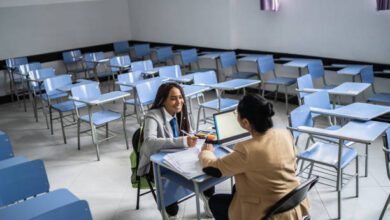Exploring the Impact of Educational Policies and Reforms


Introduction
Education is a vital aspect of societal progress and individual development. Governments around the world have recognized the significance of a well-rounded education system in shaping the future generations and driving economic growth. In pursuit of this goal, various educational policies and reforms have been implemented across different countries. These policies aim to address the challenges faced by the education sector, improve the quality of education, and bridge educational disparities. In this article, we will explore the impact of educational policies and reforms on improving education, as well as the challenges and innovative approaches associated with them.
Overview of Educational Policies
Educational policies encompass a wide range of initiatives and strategies implemented by governments to shape and improve the education system. These policies often focus on areas such as curriculum development, teacher training and professional development, assessment and evaluation methods, funding allocation, and infrastructure development. The ultimate aim of these policies is to enhance the quality of education and ensure that it meets the evolving needs of students and society.
One example of an educational policy is the implementation of national curriculum frameworks. These frameworks provide guidelines and standards for what students should learn at different grade levels. They help to establish a consistent and structured approach to education across the country, ensuring that all students have access to the same educational opportunities.
Another important aspect of educational policies is teacher training and professional development. Effective teachers play a crucial role in the learning process, and policies aimed at improving teacher quality can have a significant impact on education outcomes. Providing teachers with ongoing training, support, and professional development opportunities helps them stay updated with the latest teaching methods and pedagogical approaches.
Challenges in Educational Reforms
While educational reforms hold the promise of improving education systems, they also face numerous challenges. One of the primary challenges is the resistance to change from various stakeholders. Educational reforms often require significant shifts in teaching methods, curriculum design, and administrative processes, which can be met with resistance from teachers, unions, and other educational bodies. Overcoming this resistance and fostering a culture of innovation and receptiveness to change is essential for successful education reforms.
Additionally, resource constraints pose a challenge to effective educational reforms. Implementing new policies and initiatives often require substantial financial investments. However, limited funding can result in inadequate infrastructure, insufficient teacher salaries, and a lack of essential resources such as textbooks and classroom materials. Addressing these resource constraints is crucial for ensuring the success and sustainability of educational reforms.
Measuring the Effectiveness of Policies
To determine the impact and effectiveness of educational policies, it is essential to establish robust measurement frameworks. These frameworks enable policymakers to gauge the progress made and identify areas for improvement. Some of the common metrics used to measure the effectiveness of policies include student achievement data, graduation rates, dropout rates, and student feedback surveys.
In addition to quantitative measures, it is also essential to consider qualitative indicators such as student engagement, critical thinking skills, and creativity. These indicators provide a more holistic view of the educational experience and highlight the broader goals of education beyond academic achievement.
Addressing Disparities in Education
One of the significant challenges faced by education systems worldwide is addressing disparities in access to quality education. These disparities often arise due to socioeconomic factors, gender inequality, geographical location, and cultural barriers. Educational policies and reforms need to prioritize addressing these disparities to ensure equal opportunities for all students.
One approach to addressing disparities is through targeted interventions, such as scholarships, grants, and incentives for underprivileged students. These measures help reduce financial barriers and create opportunities for students who may otherwise be unable to access quality education.
Furthermore, improving infrastructure in underserved areas and remote regions is crucial. This includes building schools, providing transportation facilities, and ensuring access to digital technology for students in remote areas. By bringing education closer to marginalized communities, we can bridge the educational divide and ensure equitable access to quality education.
Innovative Approaches to Education
In addition to traditional educational policies, innovative approaches are emerging to enhance the quality of education and better prepare students for the future. One such approach is the integration of technology in classrooms. The use of digital tools and online resources can facilitate personalized learning, enable collaborative learning environments. And provide access to a wealth of information beyond traditional textbooks.
Furthermore, project-based learning and experiential learning methods are gaining popularity as they promote critical thinking, problem-solving skills, and creativity. These approaches encourage students to apply their knowledge to real-world situations. Fostering a deeper understanding of concepts and fostering a love for learning.
Another innovative approach is the emphasis on holistic education, which goes beyond academic knowledge. And focuses on the development of social and emotional skills. This includes promoting empathy, resilience, communication, and interpersonal skills. As they are essential for success in the workplace and in life.
Conclusion
Improving education requires a comprehensive and multifaceted approach. Educational policies and reforms play a crucial role in shaping the education system . Addressing disparities, and enhancing the quality of education. However, these reforms face challenges such as resistance to change and resource constraints. To measure the effectiveness of policies, robust measurement frameworks need. To be put in place, considering both quantitative and qualitative indicators. By addressing disparities and adopting innovative approaches, we can create a more inclusive and effective education system.





